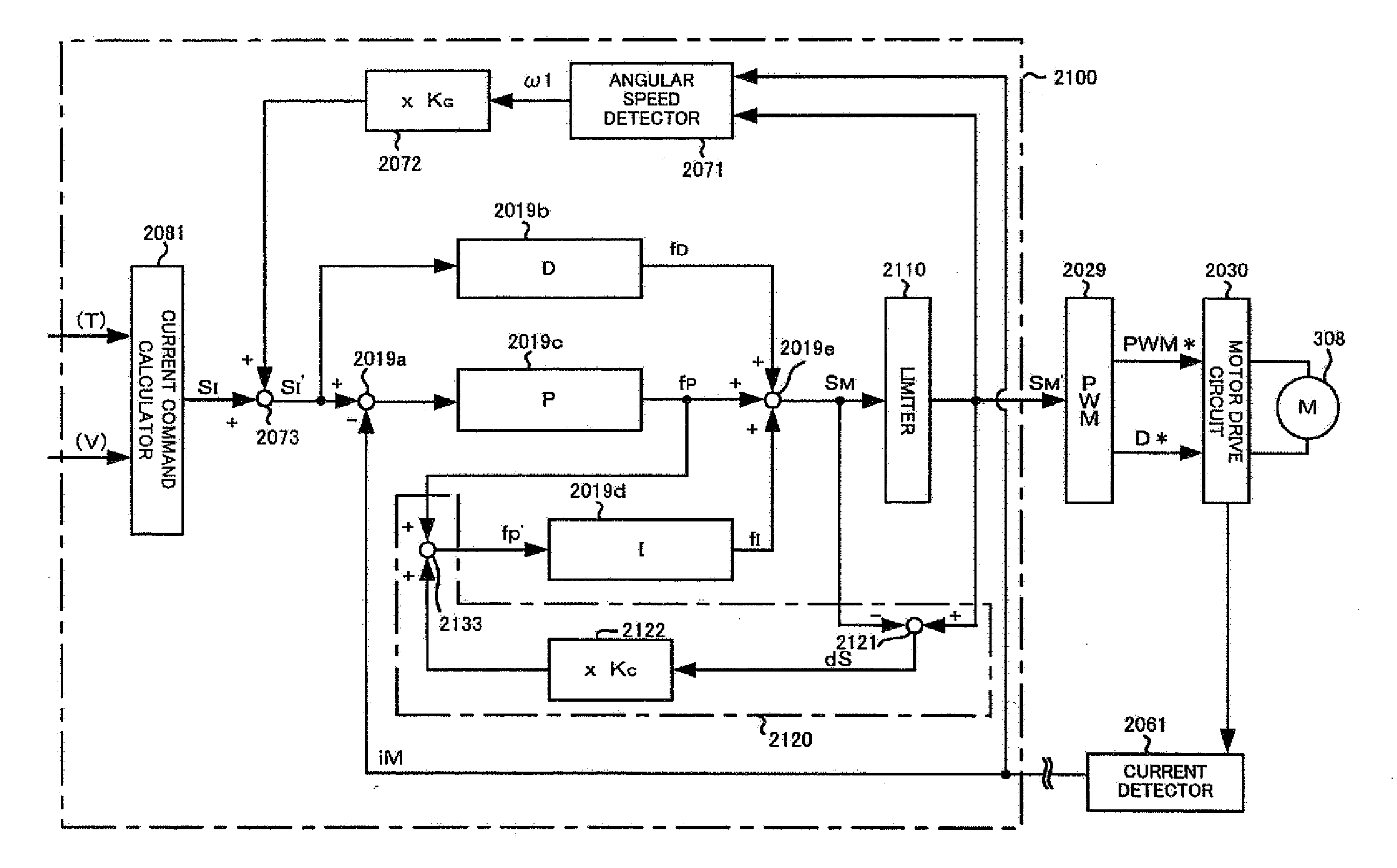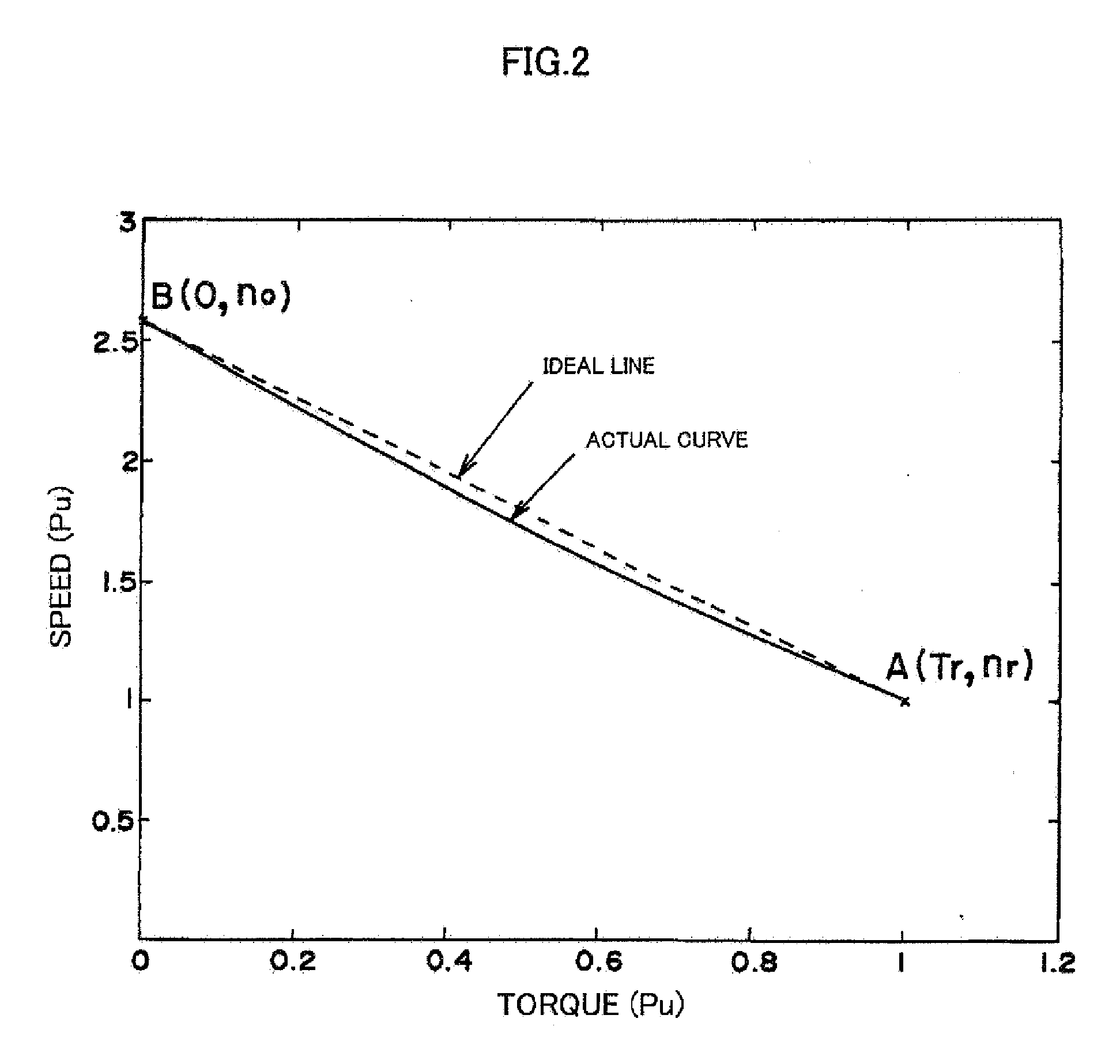Method and apparatus for controlling electric power steering system
a technology of electric power steering and electric motor, which is applied in the direction of damping of motor control for motor oscillation, non-deflectable wheel steering, underwater vessels, etc., can solve the problems of increasing cost and size, large torque ripple in the motor, and the failure of the motor to produce the necessary torqu
- Summary
- Abstract
- Description
- Claims
- Application Information
AI Technical Summary
Benefits of technology
Problems solved by technology
Method used
Image
Examples
case 2
[0137 is a conventional technique for determining the d-axis current command value Id without having it exceed the maximum current in the above Formula 37. When the d-axis current is large, negative side effects such as reduced efficiency, vibration and noise occur. The field-weakening control is necessary to produce an output, but the d-axis current command value Id does not have to be a non-duty saturating maximum value. It is desirable that the d-axis current command value Id is a minimum value needed for producing the required output. A required output for an electric power steering system is a known design requirement and usually determined at the request of an automotive manufacturer (customer).
[0138]A point C in FIG. 13 represents a required output that cannot be produced without performing the field-weakening control. Therefore, the limit value of the d-axis current command value Id should be determined to yield the output represented by the point C. There is no need for pro...
PUM
 Login to View More
Login to View More Abstract
Description
Claims
Application Information
 Login to View More
Login to View More - R&D
- Intellectual Property
- Life Sciences
- Materials
- Tech Scout
- Unparalleled Data Quality
- Higher Quality Content
- 60% Fewer Hallucinations
Browse by: Latest US Patents, China's latest patents, Technical Efficacy Thesaurus, Application Domain, Technology Topic, Popular Technical Reports.
© 2025 PatSnap. All rights reserved.Legal|Privacy policy|Modern Slavery Act Transparency Statement|Sitemap|About US| Contact US: help@patsnap.com



